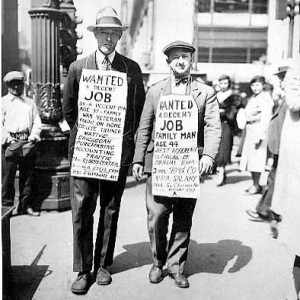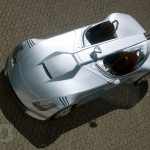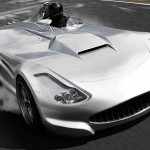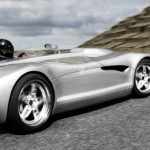We won’t harp on what is already a massively over-hyped financial situation. Yes, it’s tougher to obtain credit these days, but it was far too easy a couple of years ago. Previously, the banks were a joke. I think that the conversation between bank lender and customer went something like this: “You don’t have a job right now? No worries, the payments are low enough that you can afford a 3,000 sq ft house for the first year. Then when the payments balloon when the interest rate resets, you’ll have a job and be earning enough money to pay it!”
Except the customer didn’t. But the bank took that risk because houses were appreciating at such a brisk rate that they could always be put back on the market if the customer defaulted. Except the houses didn’t keep appreciating because too many people defaulted so too many homes were for sale.
Compounding the problem were people who bet on whether or not this unemployed customer would default on their loan. These bets are called Credit Default Swaps, or CDSs, and they are a blurry underground derivative market that no one outside of the financial industry fully understands. All we know is that CDS derivative transactions amounted to about $55 Capital T-rillion in 2007.
So when banks started miscalculating the rate of defaults thanks to a burst housing bubble, the whole financial industry that had been playing this derivative shell game was brought to its knees. The greedy bankers got burned and now we’re all paying the price (except here in Alberta and in Saskatchewan where we are as well-sheltered as can be expected).
That’s what started this whole r-word. But I honestly believe that if people didn’t watch the news, the stock markets would be fine and this would be no more of a recession than 2001 was. Instead, thanks to fear-mongering “news” channels like CNN and Fox, we’re approaching something akin to Black Tuesday (not to be confused with the shopping holiday, which is on a Friday) and the dust-bowls of the 1930′s. But after we’re done turning towards demagogues like Barack Obama to solve all our problems and we’ve finished with protectionism of our auto manufacturers, what will we drive?
After the Second World War (the first time people really bought cars en masse after The Great Depression), very large Detroit-designed sedans were in vogue in North America because they represented what people wanted and what people felt. Capitalism has proved victorious in the war, the US was an industrial superpower, and successively larger and more powerful cars were accepted because of people’s desire to display their post-war prosperity. This is by and large the same thing that Detroit did with SUVs in the 90′s and 00′s and it has all unraveled with rising oil prices, the same way it did during the oil crisis of 1973.
The most recent predicament of the domestic automakers is a direct result of the tail-fin mentality. For the last 15-odd years, the Detroit 3 have built gargantuan SUVs that we did not need but were convinced into wanting, much in the same way that Caddilac sold people cars with 42″ fins in 1959 and Dodge sold us the 1973 Challenger with a 7.0L Hemi engine. Detroit is a fantastic weaver of dreams but continuously fails to provide us with what we need when we need it. Until now.



Now one of the Detroit 3, or rather the Essex, England-based arm of one of the Detroit 3, is poised to give America what they need. And it can’t get here soon enough. Ford UK is set to bring the new Fiesta sub-compact, Kuga CUV, and Focus compact (not to be confused with the monstrosity currently on sale) here to our shores starting in 2010. These vehicles are better looking, superiorly designed, and more fuel efficient than anything Ford currently offers us here. It is vehicles such as these that meet the needs of Americans while still appealing to our desire for style and quality.
Unfortunately, looking into the future is an inexact science. So I’m also going to offer you an alternative future reality and I’ll leave it to you to choose the more likely.

In Europe after WWII, smaller and lighter sports cars were the prestige car of choice. These cars were often raced or modeled after race cars. At this time, there were several small up-start car companies that competed for buyer’s dollars as well as racing glory. One of these companies was called Veritas.
Veritas, a German car manufacturer, was a highly successful motorsports campaigner in Formula 2. Using the BMW 328 platform, the Veritas RS was a single-seat sports car with either a 1.5 or a 2.0L BMW engine. Sadly, by 1954, Veritas was no more due to a failed attempt to compete in the Formula 1 German Grand Prix and a drying pool of interested customers.
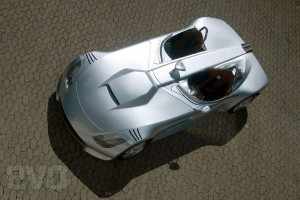
Today, things have changed. After a more than 50 year absence, Veritas is back with the RS III. Using either a 4.0 or 5.0L BMW M engine, the RS III retains the single seat nature of its fore-bearers. Concessions have been made in the shape of a “passenger seat” although since it has not even half a windscreen and is miles away from the driver, it’s hardly the best place to put the trophy wife. And with an expected asking price of around CDN$550,000-600,000, the RS III will appeal only to those stock managers who saw the purse-strings tightening and invested in McDonald’s (MCD) stock. The rest of us will have to pool together our own and all of our neighbours’ funds to be able to afford this sensationally visceral experience.
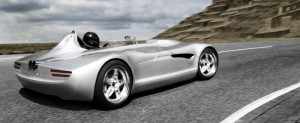
The Stig’s African-American cousin seems to be driving the RS III in these shots. Lewis Hamilton perhaps? We’ll never know.
Upon further reflection, I think it’s pretty clear which way we need to go and for the first time in my memory, the move forward has a Blue Oval stamped on it. 2010 can’t come soon enough.


